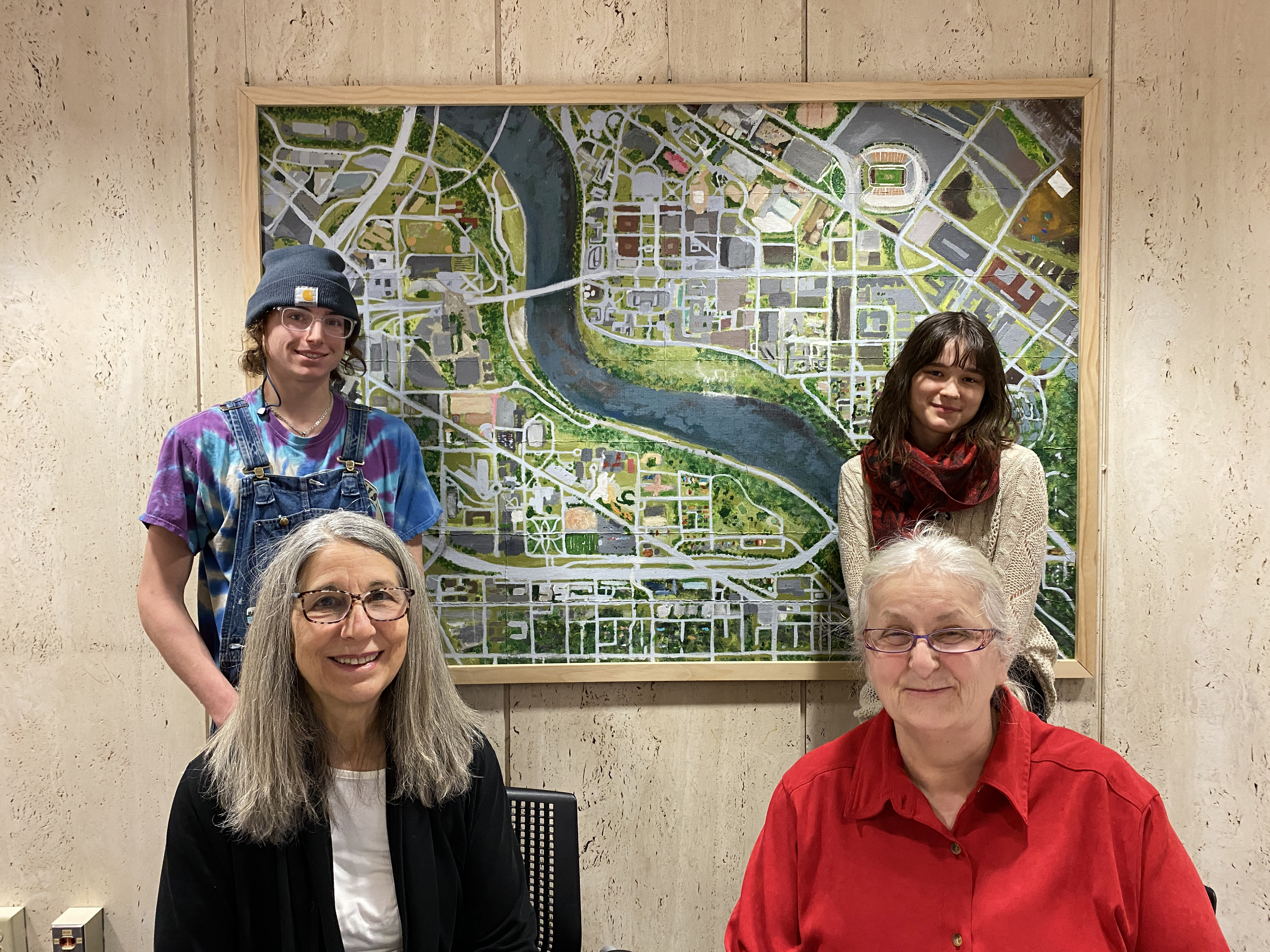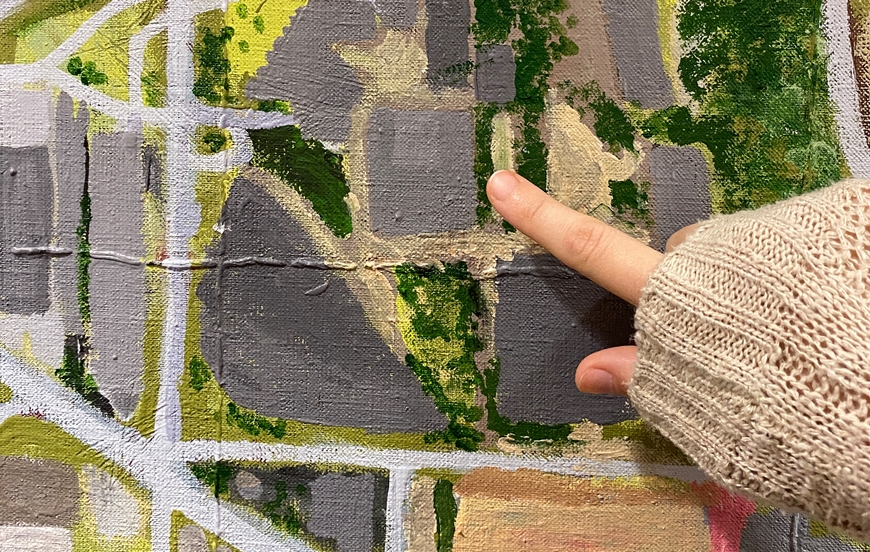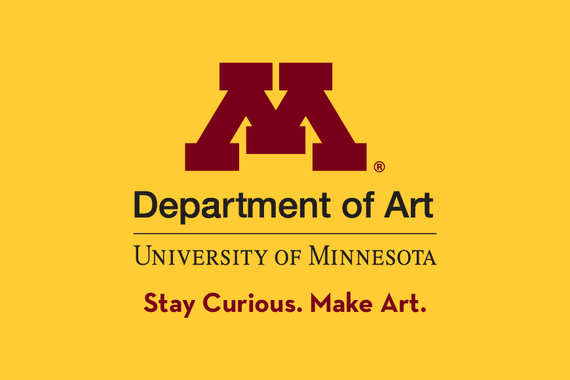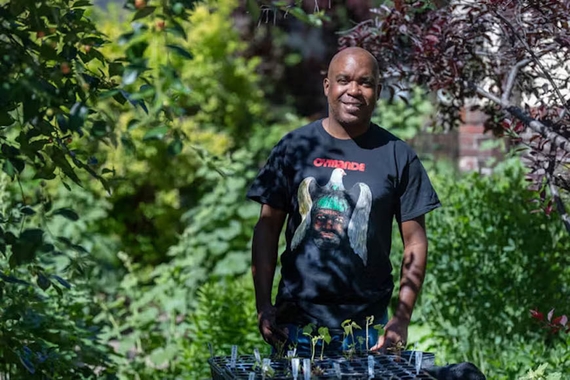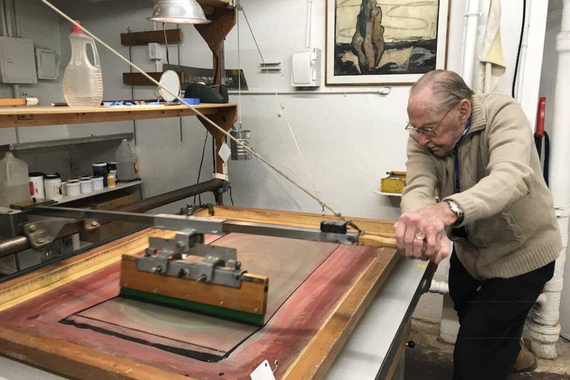New student artwork at Wilson Library features a campus map built from the green ground up
Wilson Library has a brand new addition, and you won't be able to miss it: a four-by-seven foot hand-painted campus map hanging just off the main lobby. Titled Beyond Boundaries, the mixed media work was created collaboratively by five students in Professor Diane Willow’s Spring 2022 class Art + Change: The Transformational Power of Art. From a distance, the painting might read as a straight-forward aerial view of the East and West Bank campuses straddling the curve of the Mississippi River. For the artists, however, this project was not just a snapshot of the present moment but a history lesson as well.
“This is kind of like research art,” says Jacquelyn Fay, one of the student artists involved, who became interested in what had existed in these spaces before the sprawling UMN campus was built. “I remember digging deep into the archives. The Bohemian Flats in the 1900s was more of a vibrant working class community by the river. There were neighborhoods here. Things had to be demolished for the West Bank to happen, for sure.”
“I’m a Fine Arts & Urban Studies double-major,” Fay adds, “so this is actually in perfect conjunction with the two.”

"My goal as an artist and educator teaching this course," says Professor Willow, "is to create contexts and experiences that approach art as a catalyst for change. This change may be reflected in how we imagine ourselves, one another, our relationship with the environment that we share with other than human species, and the universe. By introducing an open palette of artistic media spanning sensorial materials and tangible media, students are invited to consider how materials and technologies shape the ways that we think and how as artists we can engage with them to realize our visions. It is very inspiring to me to witness the commitment to sustained collaboration and social action expressed by this eclectic and inclusive group."
The student group is indeed eclectic, bringing a range of experiences, interests, and skillsets to the project: Fay found the piece's pegboard backer and researched the area's history. Bryce Mason, a high school student in the Post-Secondary Enrollment Options program, helped digitally grid out the map and locate archival images. Artist Ellen Schillace and veterinarian Aimee Sutherland, who are both non-degree seeking students, helped source the paints and twine used to stitch it all together. And Ty Schwantz, an undeclared student, made sure the project acknowledged that this is Dakota land – Mni Sota Makoce – in an area just upstream from Bdote, the confluence of the Mississippi and Minnesota rivers.
“All of us were painting pieces of it,” says Schillace. “Everybody’s hand has touched the paint, and everyone did such a wonderful job.”
Once the research had been done, the map had been gridded, and the materials had been sourced, the group began painting – starting with the color green. As they added roads and buildings, those greens began to disappear under shades of gray. “As we were layering it, we were recognizing the morphing of this greenspace,” Schillace says. “It was very much a learning experience.”
The map highlights the man-made overlay of streets, highways, and buildings on top of the land and river, but without street names or directional information, the piece becomes less of a map and more of a landscape, showcasing the stark contrast between the natural and the man-made, while also showing the parallels between them.
“If you think about it, highways are kind of like man-made rivers,” says Fay. “They can be arteries for the city and hubs for transportation,” as well as methods for division and destruction, she notes, as with I-94’s demolition of the historically Black Rondo neighborhood in Saint Paul, just a few miles east of this map.
“We spent about three months doing this, meeting twice a week the five of us. We were doing it outside of classtime,” says Schillace, laughing. “The library really made a difference in this process, coming over here and doing research.”
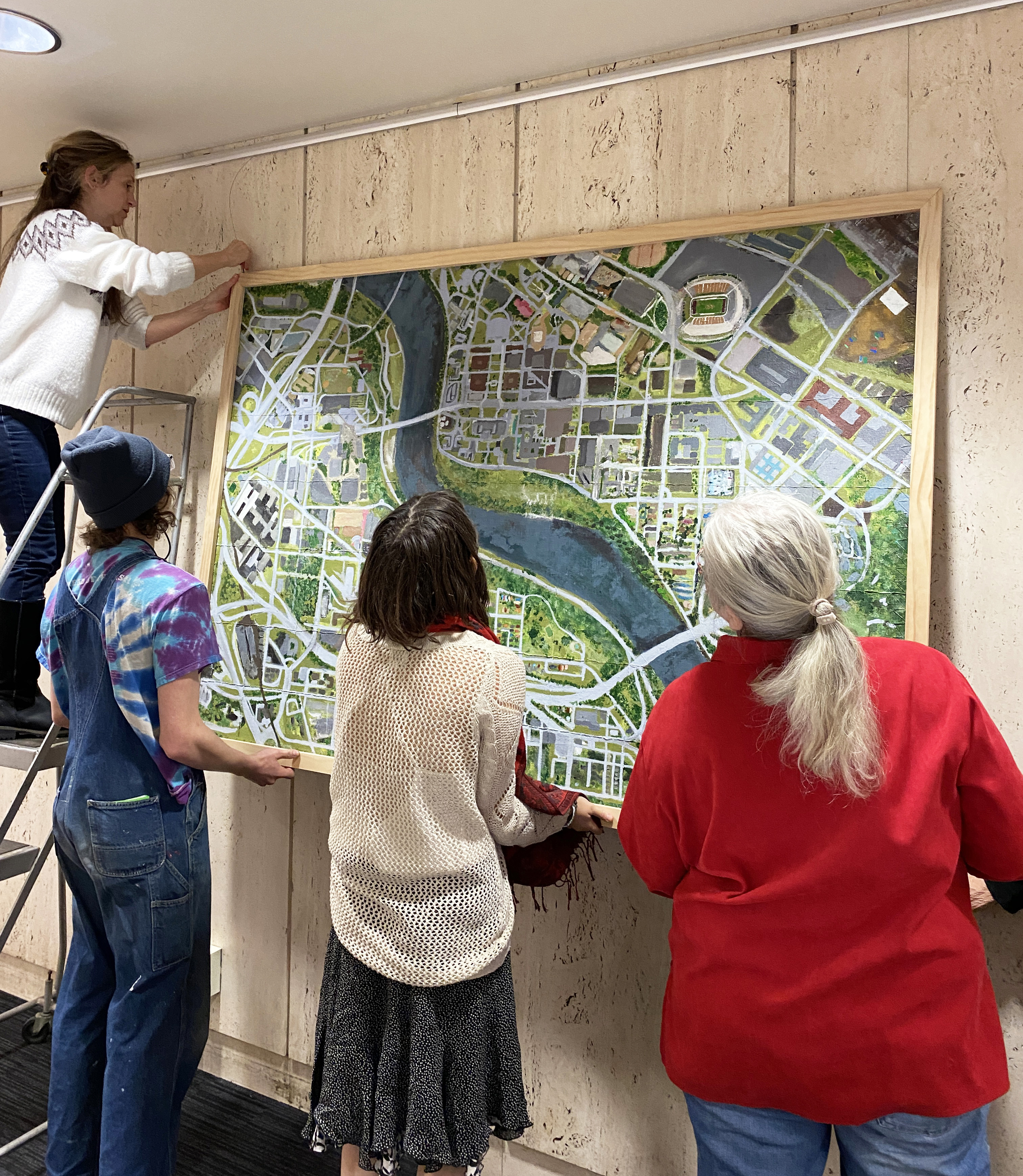
“This is one reason why I like to bring the art over here,” says Deborah Ultan, the Arts & Design Librarian at Wilson Library. “Not everybody recognizes the type of resources that the library has, so if faculty can bring me in on projects early on, I can point students to the archives, to the literature, to both primary and secondary resources that would inform this kind of making.”
Having Beyond Boundaries on display is part of an ongoing collaboration between the libraries and the Department of Art that first began in 2004, according to Ultan. “By showing the artwork here that’s going on on campus, you’re having the opportunity for more exchange and conversation. It adds value to the student experience in making the artwork and having it exposed and shared.”
“We just didn’t give up on the idea of actually showing the painting,” says Schillace, “and Deborah was magical in saying ‘we can make this happen.’”
“I think this piece in particular resonates with our times so much,” Ultan continues. “We are looking at whose land is this? What are we doing with this land? What is the history of this campus and how it evolved? All of those questions are so important especially in the library. We want to be engaged in that discourse.”
Beyond Boundaries will be on view at Wilson Library through mid-spring 2023.
